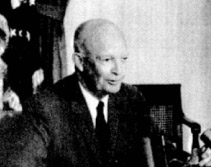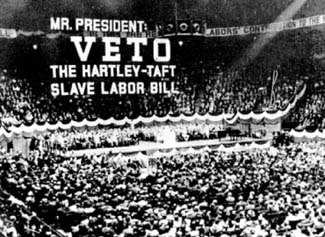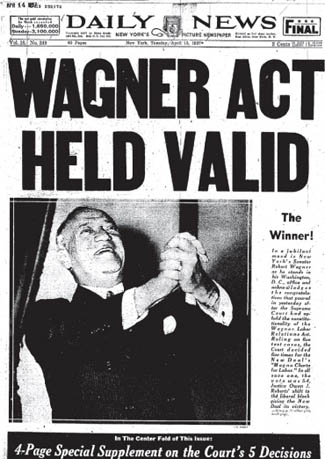About NLRB
1959 Landrum-Griffin Act
 After passage of the Taft-Hartley Act, the number of union victories in NLRB-conducted elections declined. During the 12-year administration of the Wagner Act, unions won victories in over 80 percent of elections. But in that first year after passage of the Taft-Hartley Act, unions only won around 70 percent of the representation elections conducted by the agency.
After passage of the Taft-Hartley Act, the number of union victories in NLRB-conducted elections declined. During the 12-year administration of the Wagner Act, unions won victories in over 80 percent of elections. But in that first year after passage of the Taft-Hartley Act, unions only won around 70 percent of the representation elections conducted by the agency.
1947 Taft-Hartley Passage and NLRB Structural Changes
 The campaign to amend the Wagner Act in the 80th Congress was led by Senator Robert A. Taft of Ohio, chairman of the Senate Labor Committee, and Rep. Fred A. Hartley, Jr., of New Jersey, the Republican chairman of the House Education and Labor Committee.
The campaign to amend the Wagner Act in the 80th Congress was led by Senator Robert A. Taft of Ohio, chairman of the Senate Labor Committee, and Rep. Fred A. Hartley, Jr., of New Jersey, the Republican chairman of the House Education and Labor Committee.
1947 Taft-Hartley Substantive Provisions
The Taft-Hartley Act made major changes to the Wagner Act. Although Section 7 was retained intact in the revised law, new language was added to provide that employees had the right to refrain from participating in union or mutual aid activities except that they could be required to become members in a union as a condition of employment.
1937 Act Held Constitutional

No sooner had the Wagner Act passed than employer groups mounted a campaign against it. The National Association of Manufacturers denounced the new law as unconstitutional, and, in September 1935, the American Liberty League issued a lengthy brief arguing against the constitutionality of the law and advising employers to disregard it.
1933 The NLB and "The Old NLRB"
The renewed interest in organizing, together with the refusal of many employers to recognize the unions their employees wanted, triggered strikes in support of the organizing drives. By August 1933, the situation had become so severe that President Franklin Roosevelt created a National Labor Board (NLB) to bring about compliance with Section 7(a) and to mediate labor disputes.
Pagination
- Previous page
- Page 25
- Next page

